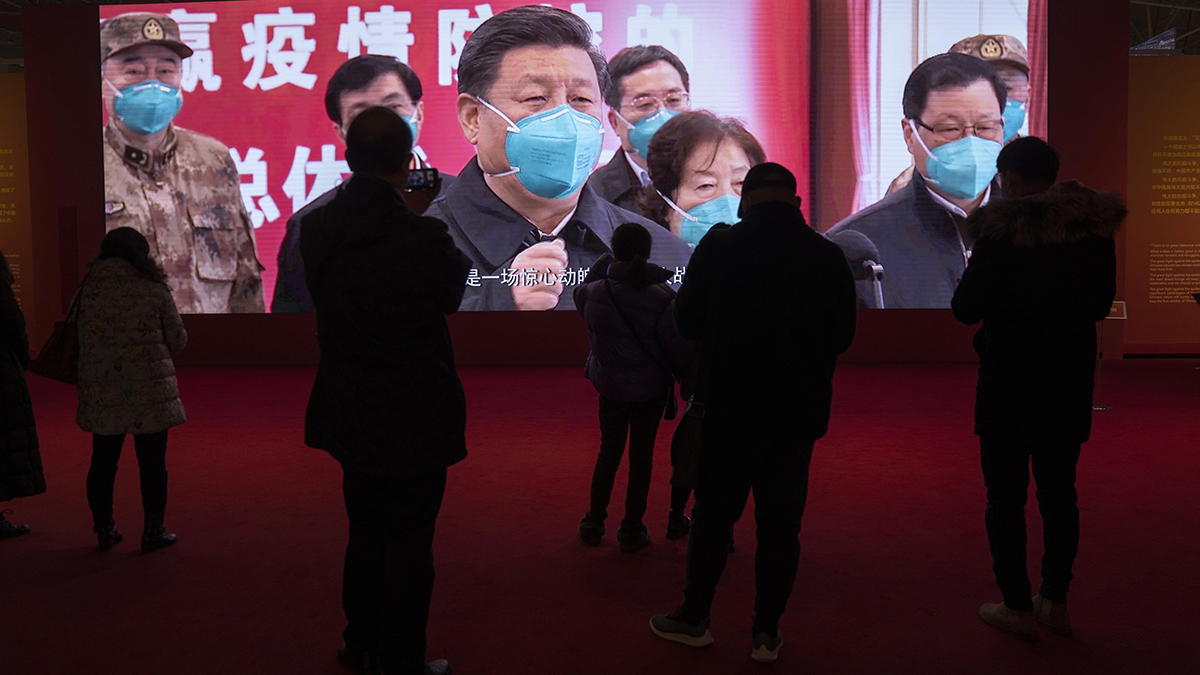The Centers for Disease Control revised its COVID-19 guidelines on Monday to include that the novel coronavirus can be spread through aerosols, which "can linger in the air for minutes to hours" and travel farther than six feet.
Until now it was understood that the coronavirus is spread is through respiratory droplets produced when an infected person coughs, sneezes, sings, talks or breathes, and experts still believe that is the main way it is spread. But now experts also agree that airborne transmission is a key piece of the COVID-19 puzzle.
"I believe pretty confidently that there is some element [of airborne transmission]," White House advisor Dr. Anthony Fauci said Wednesday.
Here’s how to interpret these new guidelines and stay safe:
What it means that coronavirus is airborne
So what’s the difference between the virus spreading through respiratory droplets and being airborne? It comes down to the size of the droplets and how they travel.
Respiratory droplets are larger than aerosols — which are microscopic droplets or particles. Because of their size and weight, larger respiratory droplets get "sprayed like tiny cannonballs onto nearby individuals" and typically fall to the ground in a matter of seconds, within six feet of the source, according to paper published Monday in the journal Science, which called for stronger public health guidance on how the virus travels and spreads through the air.
Coronavirus Pandemic
Full coverage of the COVID-19 outbreak and how it impacts you
Viruses in aerosols, on the other hand, are smaller and don’t just drop — they’re suspended in the air for minutes or hours and can be inhaled.
An easy way to visualize how these airborne particles act is to think about the way that cigarette smoke lingers and can be inhaled, Linsey Marr, coauthor of the paper and a professor of engineering at Virginia Tech, said in a press conference Monday. Like smoke, aerosols can accumulate in a confined space, like a poorly ventilated room or areas where people are breathing heavily.
Although aerosolized particles are much smaller than droplets, they can be concentrated enough to spread COVID-19 to other people, according to the CDC.
How to prevent airborne transmission of COVID-19
The best way to prevent the spread of COVID-19 is still wear a mask, maintain social distance and avoid large indoor gathering. Remember: The virus is mainly spread through respiratory droplets when people have close contact with one another.
Wearing a standard double-layer cloth face mask can add a layer of protection, because it prevents your respiratory droplets from spreading. But they don’t provide enough protection to filter out airborne or aerosolized particles, only a N95 respirator can do that. But the CDC says N95 respirators should be saved for health care workers and other medical first responders.
Since airborne spread is a possibility, keep in mind that indoor gatherings (especially in places that are not well ventilated) with people outside your household increase your risk of infection. Going back to the smoking analogy, picture a person smoking a cigarette in the room with you. "What if all of the people in that situation are smoking? Are you going to be exposed? Will you breathe a lot of cigarette smoke? If yes, you need to do something to change the situation," Marr said in the release.
Beyond wearing a mask and maintaining social distance, using portable air purifiers is one way to reduce airborne contaminants in a space. And simply opening windows to introduce clean air into your space is another way to increase ventilation.
In September, the CDC posted a draft of revised guidelines that included information about airborne spread, and then removed the update. The agency said it was still in the process of updating its recommendations when they were published in error.
The new guidelines published Monday cite "published reports showing limited, uncommon circumstances where people with COVID-19 infected others who were more than 6 feet away or shortly after the COVID-19-positive person left an area," the CDC said in a statement.
This article first appeared on CNBC.com. More from CNBC:


